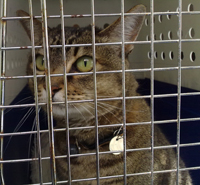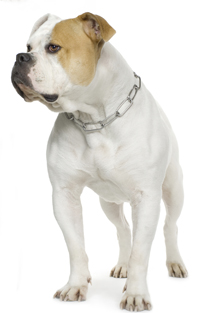A look at pet shipping for movers: a directory of pet shippers, pet travel insurance, pet travel rules and answers to some pet travel FAQs.

Shipping pets is a specialised business. It’s not something that moving companies would dabble in. But that doesn’t mean that they should not understand how it works, help their customers look after their ‘best friends’, and even make a few pounds in the process. This feature looks at the essentials of pet shipping with the intention of helping moving companies capitalise on the opportunities on offer while helping their customers at the same time.
Anyone who has spent more than an afternoon on the road doing surveys will know that many people, perhaps even most people, are more concerned about how the move will affect Felix or Rover than they are about anything else. Household goods and even children take a poor second place when it comes to pet welfare. It’s bad enough when a customer is moving domestically, but when it comes to an international move – oh dear! If you can help them ensure the safety of their pet, you stand a much better chance of securing the move itself. Go about it in the right way and you could even make a few extra quid in the process.
Martin Brown from Airpets located conveniently near London’s Heathrow airport, pointed out that people are often so concerned about their pets that by the time the removal salesman gets there they will probably be well fixed up with a pet shipper. But people often do plan well in advance, especially for international moves, so there is a strong likelihood that some, at least, will be unsure what to do.
The advice is, of course, not to get drawn into conversations on subjects you know little about. It’s much better to have a relationship with a reliable pet shipper and simply to pass on the enquiry. Most of the pet shippers will offer a commission to moving companies.
But a little knowledge can be helpful to offer customers some guidance. You should avoid getting too specific though as every country treats pets differently and there are too many opportunities to mislead customers unless you are very sure of your ground.

Airpets was established 40 years ago as a boarding kennels moving into the pet shipping business as the numbers of people travelling with pets increased. The company now has 35 full-time staff and ships around 1,000 animals a year mainly to the migrant destinations. “Every country has different regulations,” said Martin Brown. “The easy bit is handling the dog or cat. The problems come with the buracracy involved in doing the testing, getting permits and health certificates, organising worming, spraying, etc.,” he said.
Some countries are very straight forward, others much more difficult. “For the States it’s easy, you just need a health certificate, a box and a flight. But the new regulations in New Zealand can be a nightmare.” Martin points out that New Zealand has recently introduced a 10-day quarantine period for animals entering the country. Martin believes that this is pointless. “If you quarantine an animal for 10 days and there’s a problem what do you do, do you send it back? What’s the point of holding onto it?” That’s just an indication of the problems pet shippers are dealing with every day.
Unlike the removals business, pet shipping prices seem to have done a better job of keeping up with inflation. It costs around £2,000 to ship a dog to the other side of the world although shippers are reluctant to give ball-park figures. The cost depends on the size. “If it’s a pure-bred dog we have a pretty good idea of the size,” said Martin. “But if you have a cross-breed we need to take measurements.” Measurements are always taken as follows:
- Length: Nose to bottom
- Width: Across the shoulders
- Height: Flour to top of head
Mike Sawyer, works with JCS Livestock in Colnbrook. He explained that animals always travel in the heated, pressurised section of the hold and the freight cost is around 175% of normal cargo. They are shipped in wooden or plastic containers that have to be the right size for the animal. They need to move around, but not too much. “If the box is too big it can be dangerous for the animal if the plane hits turbulence,” he said. “Every animal needs a ‘fit to fly’ statement. It’s a general health check to say it doesn’t have anything contagious and its heat and lungs are healthy.”
When the animal arrives at destination it will often have to go into quarantine. It is often possible for the owners to visit their pets while in the quarantine kennels although this might not always be a great idea. In Australia, where animals have 30 days quarantine, there are just three quarantine stations: Sydney, Perth and Melbourne. In such a big country owners can be a very long way off. “But the problem lies with the pet’s personality,” said Mike. “Sometimes seeing their owner makes them fret more when the owner leaves again without taking them too. They might be best left for the full 30 days.” Of course sometimes it’s the people who need to see the pet not the other way around – such is the bond between man and animal.
too. They might be best left for the full 30 days.” Of course sometimes it’s the people who need to see the pet not the other way around – such is the bond between man and animal.
Mike also pointed out that the quarantine period can be used as a buffer during the moving process. “You can split the quarantine half and half at either end. This allows you to go through the packing process without the dog getting in the way, the gives you some time to settle in at the other end before he comes back.”
One key point for shippers, according to Mike, is to follow exactly to the letter of the law for the relevant country. “There are very few grey areas,” he said.
Mike Sawyer, JCS Livestock
Local transportation
Animalcouriers Ltd based in West Sussex provides transport for pets within the UK as well as abroad. Although most people who are moving house will put their animal in their family car to travel to the new home, some won’t: maybe they need the car to carry other things, or perhaps the car isn’t big enough for all the family and Fido too.
Julia Baber from the company said that her company looks after the comfort of the animal while the mover looks after the furniture. “We prioritise safety and comfort of the animal placed in our care, we are committed to making the travel as pleasant, stress free and seamless as possible,” she said. “We aim to balance the needs of the family with the needs of the travelling pets.” Julia said that she can arrange to transport a pet in a large vehicle with multiple cages to reduce the cost or arrange a dedicated trip to fit in with each customer’s plans.
“It is not an uncommon sight to see Animalcouriers sharing the driveway with a removals lorry,” said Julia, “furniture one way, pets the other. When it works well, it’s a symbiotic relationship. But it is disappointing to know that some removal companies are offering ‘cut price’ pet travel as it is not only illegal for pets and furniture to share the same space but it does not address the needs of the travelling pet. It is just not possible for a furniture lorry to provide a good quality travelling space for pets.” Animalcouriers will even supply a veterinary nurse to travel with the pet if it’s very elderly or ill. 
Love ‘em or hate ‘em we have to accept, in the moving business, that people’s animals are very important to them. All moving companies are well advised to build a strong working relationship with a pet shipper and to use that relationship to the advantage of both companies and your mutual customers.
There are many pet shippers worldwide. The pet shipping industry has a trade association IPATA (International Pet and Animal Transportation Association). It has 26 members in the UK and many more internationally all of which are required to agree to follow IPATA’s membership criteria, code of ethics and by-laws at the time they join (more information and a complete list of members worldwide is available on www.ipata.com).
Pet Shipping directory
Pet Travel Insurance
What does the new UK pet import regulation mean?
Answer to some pet travel FAQs from PetAir